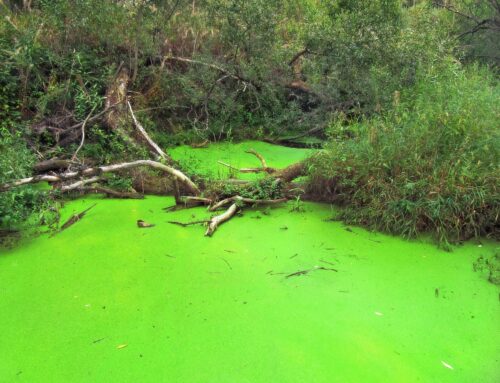Essential Pond Management Tips for New York Pond Owners
Proper pond management is crucial for maintaining a healthy and sustainable aquatic ecosystem, whether for residential or commercial purposes. Here are the top five considerations for pond owners to ensure responsible pond management:

- Water Quality Monitoring: Maintaining good water quality is fundamental for a successful pond. Regularly monitor parameters such as pH, dissolved oxygen, temperature, and nutrient levels. These factors directly impact the health of aquatic life and the overall balance of the ecosystem. High nutrient levels can lead to algae blooms and oxygen depletion, while low oxygen levels can harm fish and other organisms. Regular testing and adjustments, if necessary, help prevent imbalances and maintain an optimal environment for both plants and animals.
- Adequate Aeration and Circulation: Proper aeration is essential for maintaining oxygen levels and promoting circulation in the pond. Aeration systems, such as aerators and fountains, help prevent stratification, where layers of water with different temperatures and oxygen levels form. This ensures oxygen is distributed throughout the pond, preventing oxygen-poor zones. Adequate circulation also helps control algae growth and improves overall water quality. Pond owners should choose aeration systems based on the size and depth of their pond, considering factors such as water volume, temperature variations, and the types of aquatic life present.
- Vegetation Management: Careful management of aquatic vegetation is vital for maintaining a balanced pond ecosystem. While some plants are beneficial for oxygen production and habitat, excessive growth can lead to problems such as oxygen depletion and nutrient imbalance. Implementing a well-thought-out vegetation management plan involves controlling invasive species, promoting beneficial native plants, and ensuring a proper balance between open water and plant cover. Mechanical removal, herbicides, and biological control methods can be employed depending on the specific needs of the pond. Regular inspections and adjustments to the vegetation strategy help prevent overgrowth and maintain a healthy ecosystem.
- Harmful Algae Bloom Management: To address the potential threat of Harmful Algae Blooms (HABs), pond owners should consider natural probiotic treatments as an alternative to chemical interventions. HABs can occur when certain algae species rapidly multiply, producing toxins that can harm aquatic life and pose risks to human and animal health. Probiotic treatments involve the introduction of beneficial microorganisms, such as specific strains of bacteria, that competitively inhibit the growth of harmful algae. These natural treatments help restore microbial balance in the pond, reducing the nutrient load and suppressing the conditions conducive to HAB formation. Regular application of probiotics supports a healthy microbial community, enhancing water quality and minimizing the need for chemical interventions. This eco-friendly approach aligns with responsible pond management practices, fostering a sustainable and naturally balanced aquatic ecosystem.
- Fish Population Control: Proper management of fish populations is crucial for preventing overcrowding and maintaining a healthy balance within the pond. Overpopulated ponds can lead to competition for resources, stunted growth, and increased susceptibility to diseases. Pond owners should establish stocking guidelines based on the size and characteristics of the pond, considering factors like fish species, growth rates, and reproductive capabilities. Regular monitoring and, if necessary, adjusting the fish population through controlled harvesting or stocking can help maintain a harmonious balance. Understanding the specific needs and behaviors of the fish species present is essential for effective population control.
- Sedimentation and Dredging: Over time, ponds accumulate sediment, which can lead to reduced water depth and degraded water quality. Regular assessment of sedimentation levels is essential, and pond owners should consider dredging when sediment buildup becomes significant. Dredging involves removing accumulated sediment to restore the pond’s depth and improve water quality. It is a proactive approach to prevent issues such as nutrient loading, excessive plant growth, and habitat degradation. The frequency of dredging depends on factors like pond size, sedimentation rate, and surrounding land use. Implementing a dredging schedule as part of a pond management plan helps maintain the long-term health and functionality of the aquatic ecosystem.
Expert Resources for Responsible Pond Management
Responsible pond management involves a holistic approach that considers water quality, aeration, vegetation, fish populations, and sedimentation. Regular monitoring, informed decision-making, and proactive measures contribute to the sustainability and health of both residential and commercial ponds. Pond owners should tailor their management strategies to the specific characteristics and needs of their ponds, promoting a balanced and thriving aquatic environment. At EcoPond Solutions in Rochester, New York, we have years of experience in management and maintenance of ponds of all sizes, both residential, rural, and commercial. If you have questions about what to do with your pond to keep it healthy, contact us today to schedule an appointment.





